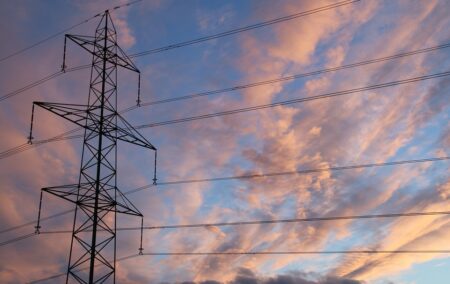It is impossible to exaggerate the urgent need for plentiful, reliable, affordable electricity for the South African economy, and therefore for the welfare of our people. Not long ago, Eskom gave South Africa a huge absolute advantage (absolute advantage not comparative advantage) with the cheapest electricity on Earth. It was a welcome mat for investors and industrialists. Now Eskom is in tatters because of corruption, incompetence and racial ideology. On top of that it is threatened by the greens, who want to force extremely expensive and unreliable solar and wind on it. Our future electricity supply is in peril.
There have been two important developments recently. First was the wonderful news that the Department of Mineral Resources and Energy plans to go out on tender for 2 500 Megawatts (MW) of new nuclear power at the end of this fiscal year. Second was the publication of Eskom’s grim report for the year ending 31 March 2021, showing big losses and “unsustainable” debt.
Eskom failures
Because Eskom failed to build power stations in the 1990s, when it was obvious they were needed, we ran out of electricity in 2007, striking a blow at the economy from which it has never recovered. The existing coal power stations were run into the ground, with maintenance neglected. They are old and falling to pieces. Andre de Ruyter, the CEO of Eskom, has done the right thing in trying to improve maintenance and repair. It is the only thing that can be done in the short to medium term (the next ten years or so) to stabilise our electricity supply. Beyond that we need new stations.
Nuclear is our best option. It is safe, clean, reliable, sustainable, and economical, as can be seen around the world. Our worst option is solar and wind, which are expensive and unreliable, as can also be seen around the world. Since 2013, Eskom has been forced to buy solar and wind electricity under the Renewable Energy Independent Power Producers Procurement Programme (REIPPPP). This is the most expensive electricity in South African history, and the worst. It puts a huge burden on Eskom, which has more than enough problems of its own. The Eskom report shows that it is now compelled to pay 218 cents/kilowatt-hour (kWh) for REIPPPP electricity, when its own selling price is 106 cents/kWh. But it’s much worse than that.
That 218 cents/kWh is for unreliable electricity, which you can never depend on and which seldom comes when it is most needed. To convert it into reliable electricity, which Eskom must do to protect the grid, is very expensive. You need to add at least 200 cents to the 218 cents to get the true cost of solar and wind to the grid. This explains why all around the world, while the greens proclaim that solar and wind are becoming cheaper, the final prices of electricity keep going up and up as more solar and wind is added to the grid. Germany and Denmark, with large amounts of solar and wind, have the highest final electricity prices in Europe; France, with lots of nuclear, has around the cheapest.
Solar power
The only renewable technology that does offer reliable electricity, for short periods anyway, is Concentrated Solar Power with storage. South Africa has built award-winning such solar stations in the Northern Cape, which has about the best solar conditions on Earth. The price of this electricity from the very newest plants? Over 500 cents/kWh at peak time. (Koeberg’s cost is about 40 cents/kWh).
South Africa should only buy new nuclear stations of proven design built by vendors with continuous successful experience in building them. There are several available. In this case, if we began contracting in early 2024, the first unit should be online about 2031, which complies with the wretched Integrated Resources Plan of 2018 (IRP2018).
IRP2018 is fantastic nonsense but has legal weight. It prescribes new power sources until 2030. It seems to have been captured by the rich renewable energy companies and the greens. It is based on computer models of electricity supply that bear no relation to the real world. It claims that solar and wind combined with a flexible energy source (such as gas, which the proposed powerships would use too) would be the “least cost” option. Actually the experience of the real world shows that it would be the “greatest cost” option (except for batteries, which are even more expensive). The South African economy is doomed if we implement this awful plan. What a pity the mainstream media and, alas, the DA are fooled by the nonsense.
The fact that it takes time to build new nuclear is all the more reason that we should start now, carefully choosing a proven design and a proven construction vendor. My calculations, using real world costs, show that new nuclear should be sustainable with life-time electricity prices of about 90 cents/kWh. This is for clean, safe, reliable electricity to make our economy grow and our unemployment levels shrink.
The views of the writer are not necessarily the views of the Daily Friend or the IRR
If you like what you have just read, support the Daily Friend

